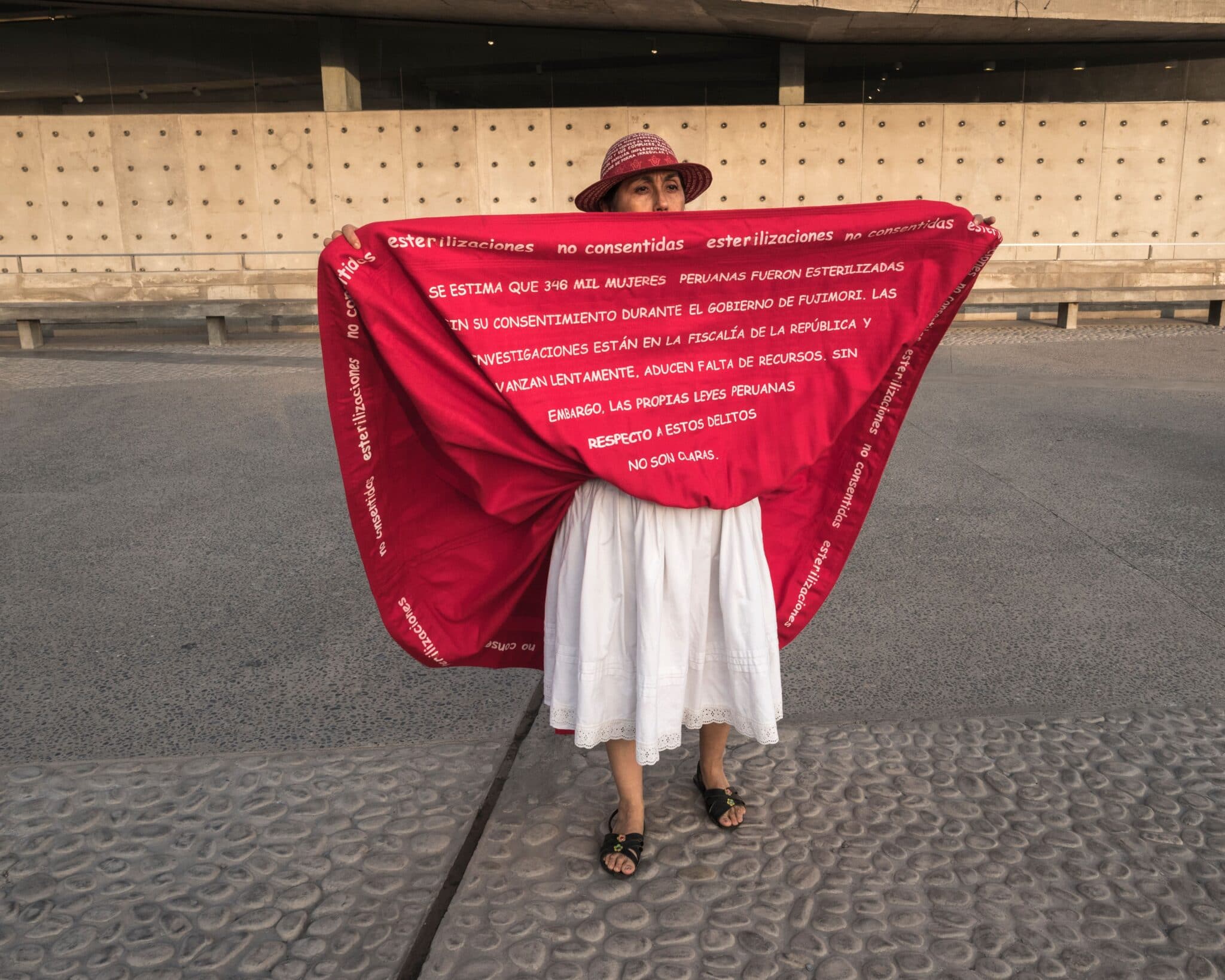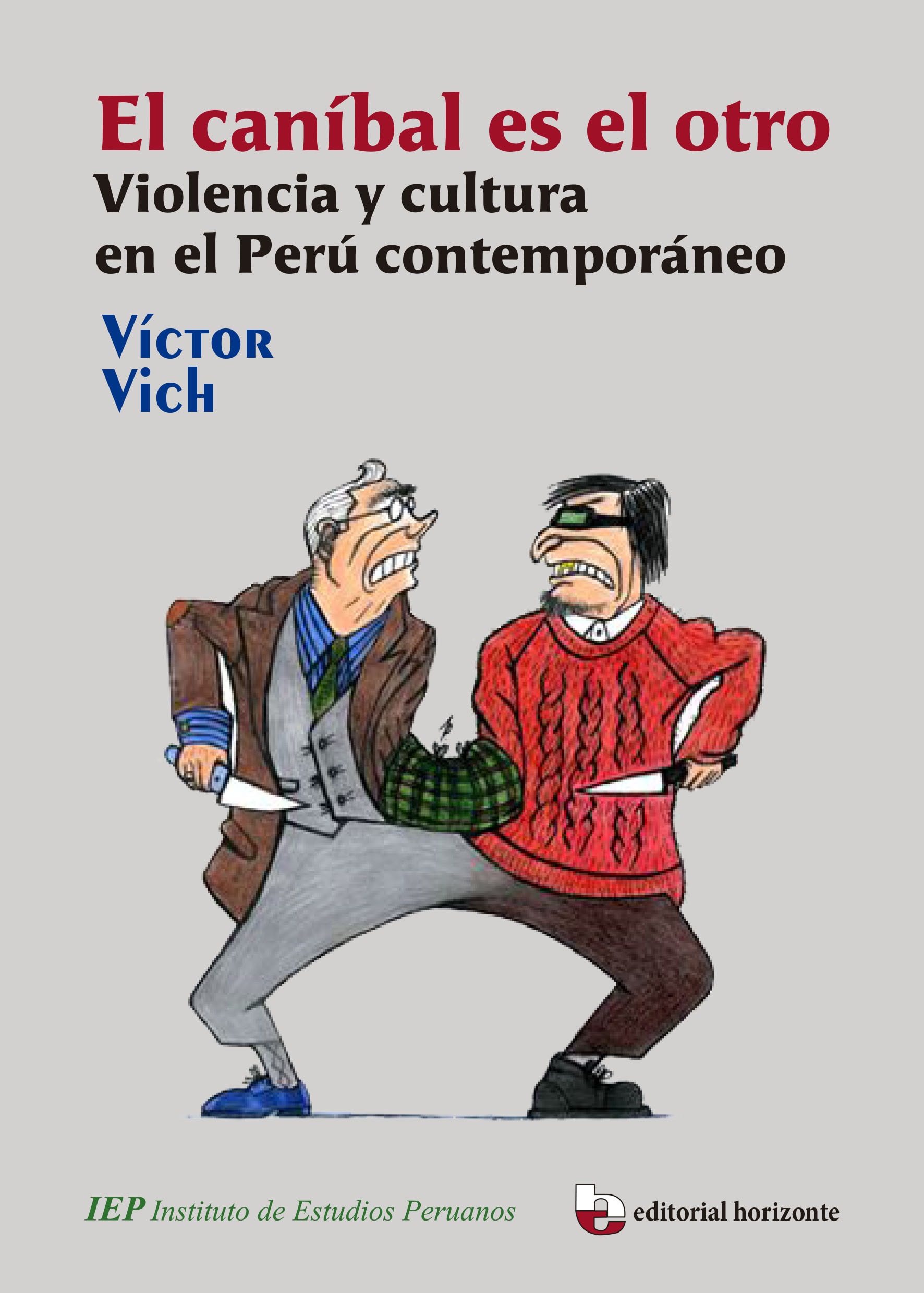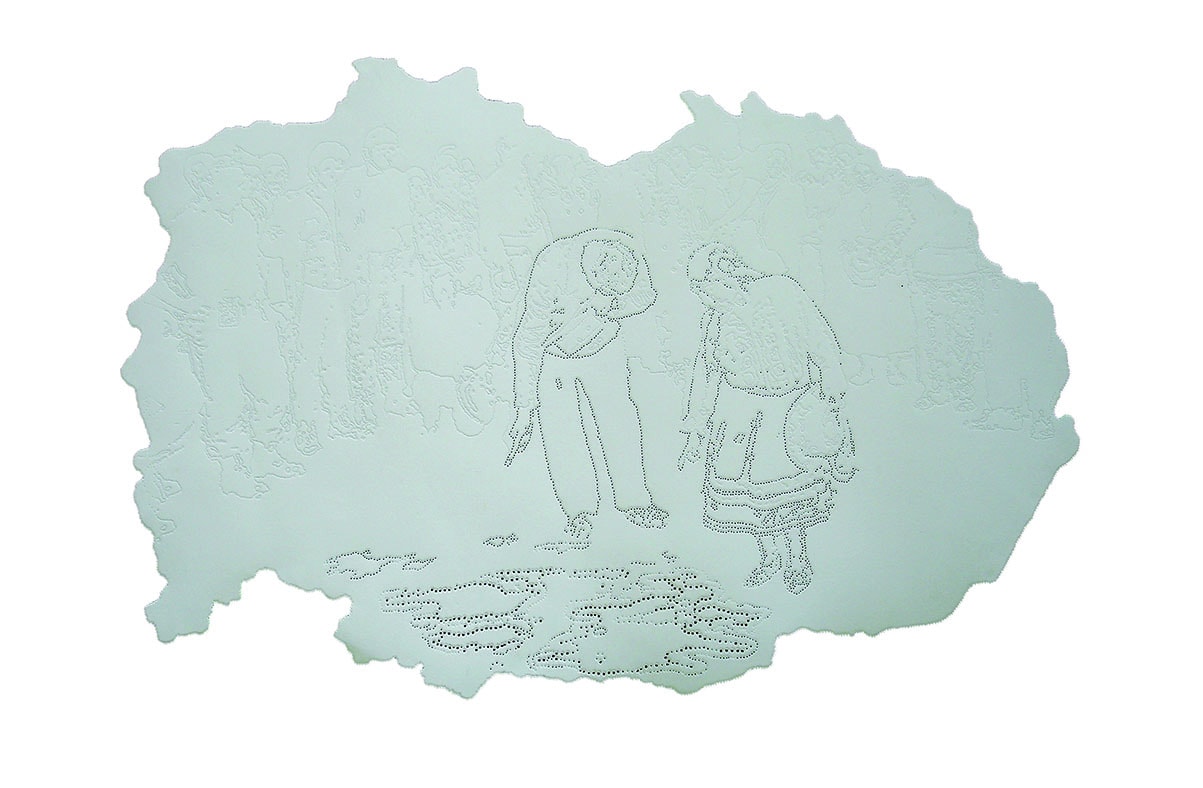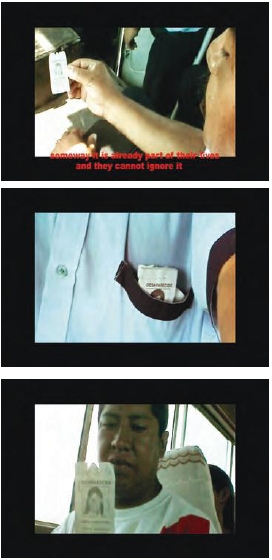
Víctor Vich: “Art is a courage discourse that is not afraid to show its wounds.”
Memory discussion is political, and its impact is more significant on the present and future than on the past. That is one of the premises surrounding the work of Peruvian intellectual Victor Vich. In 2015 he published the book Poéticas del Duelo. Ensayos Sobre Arte, Memoria y Violencia Política, where he thinks of art as the place where there are powerful self-critical reflections on a country’s past.
By Marcela Vallejo
At the beginning of 2023, in his first week in office, the new mayor of Lima, Rafaél López Aliaga, took the opportunity to express his opinion on the purpose of the Lugar de la Memoria, la Tolerancia y la Reconciliación, LUM (Place of Memory, Tolerance and Reconciliation), created after the Truth Commission’s report. For Lopez, an ultra-conservative businessman and member of Opus Dei, places like the LUM “have nothing to do with memory or reconciliation.” Because, according to him, all they do is make the military out to be the aggressors and the LUM should be administered by the Armed Forces or the Police so that “they can tell us the story as it is, who better than them to tell us what they have suffered.”
That kind of opinion, especially in the polarized context that Peru is living: a government that points to those who protest as vandals and terrorists, massive protests in the streets, dead and wounded by police repression; has revived discussions about the role of spaces like the LUM, which through photographs, documents, art pieces, videos, and installations, gives an account of the bloodiest part of the Internal Armed Conflict.
Who should build the memory of a country? Who should tell what happened? Is there a narrative closer to the truth than others? Who should tell the story: the victors, the vanquished, or the victims?
Cultural critic Victor Vich was one of the LUM’s curatorial team members when it opened its doors in 2015. Together with a group of people, days after what López Aliaga said, they issued a communiqué recalling seven crucial points. Among them, the creation of the LUM was participatory and included several sectors of society, such as the Armed Forces. And above all, remembering that the need to think about the past respectfully implies a self-critical stance.
This stance runs through the work of Victor Vich, an intellectual who has devoted himself to studying the symbolic representations of violence in Peru for almost two decades.
Photo: Lucero Del Castillo
Vich writes about poetry, but his approach is interdisciplinary. Literature has been one of many objects he has been interested in: “My academic option has been to think about cultural objects in their relation to the power relations that exist in the present or that existed before.” These cultural objects are tangible things (a photograph, a film, a poem, or a novel) and practices (parties, public discourses, or the very reality of the social).
Vich has not only devoted himself to studying the great poets such as César Vallejo, or the speeches of street comedians in Peru, but also the artistic practices surrounding memory and pain that bring together something he has called “poetics of mourning.” It is perhaps one of the aspects of his work that has been better known outside his country.
Today, in the face of Peruvian political chaos and discussions about the usefulness of sites like LUM, Vich reflects on the possibilities of art in the reparation and reconciliation process and the importance of memory debates to think about the present and the future.

Your interest in cultural objects has led you down several paths and to learn about the different forms that these objects can take. In 2015, you published Poéticas del Duelo. Ensayos Sobre Arte, Memoria y Violencia Política, in Peru, why did you become interested in the idea of mourning?
In principle, I am a person in the generation of the 80s. And political violence in Peru arose in that decade, and I grew up in that context. When I entered university, I was more or less integrated into specific human rights movements, and I felt, like many people, a need to establish a position and commit to what was happening in the country.
When I finished my degree at 24 years old, I went to live in Ayacucho to teach at the National University San Cristobal de Huamanga. Since it was the central place of violence, it was very shocking for me because there, I heard many stories and saw many things. I was directly confronted with what had happened and with what was still happening. So, reflecting on the violence implied thinking about the structural failures of the country, and it seemed to me that the most potent discourse to show what had happened was in the arts and fundamentally in the visual arts, plastic arts, and photography.
Studying those representations and the impact they had on people allowed me to argue that art was a place for processing pain, which allowed me to somehow not be trapped by it, but rather to understand it and confront it from a new position.
What interests you in these duels? Is it the violence itself or the processing of its effects?
What is processed is the trauma that originates from a violent event. But at the same time, this violent event never exists in its raw form but is loaded with the meanings we assign to it, how we remember it, and the narratives in which we write it. Psychoanalysts always say that trauma has a robust discursive packaging, and the point is to question that discursive packaging and try to produce another.

Huancasancos. Invisible Serie. Claudia Martínez, 2007
Paper incision, 75 x 56,5 cm
“Art is always the search for the representation of truth. And the word truth is always associated with something good, but it is not. The truth is uncomfortable and destabilizing; the truth is sometimes a horror, sometimes something too brutal. So, in the face of truth, it is sometimes better not to know, not to want to see it, and not to face it. Or sometimes, in a more perverse way, the solution is to cover it up, hide it, repress it, manipulate it or camouflage it by showing half-truths.”
Violence is, at the same time, an act and representation that has invested it, has taken it. The whole debate about memory is about how we symbolize traumas, represent them, and relate to them. Because we relate to history, to violence, to trauma based on discourses that are installed, that prevent us from seeing, that only position and represent specific interests. To think about violence is, of course, to think about its effects, and discourses are part of those effects.
That’s how you began to realize that the visual arts were adequate places to process trauma. What did you find in concrete terms?
I found that thinking about violence, and representing it, implied representing the actors, that is, the subjects involved. And in the arts, a critique of all the actors appeared without censorship. Not only the groups that took up arms, the terrorist groups in the case of Peru, but also the Armed Forces, the paramilitary groups, the political parties, the church, and civil society. In the visual arts, we had a representation and a critical inspection of all social sectors. And more or fewer representations were produced about how different types of social sectors had reacted or had been accomplices or agents of the horror.
So what I saw is that thinking about violence means thinking about it in a self-critical way, not in a heroic way, not in a complacent way, and not shifting the blame to the outside. To be self-critical, you have to have courage, and art is always a self-critical discourse, a discourse with courage that is not afraid to show its wounds.
I recently read The Twilight Zone by Chilean Nona Fernandez. She creates the story of a torturer during the dictatorship and writes an essay reflecting on what happened. Something that caught my attention is that when she writes about the terrible events of that period, she includes herself. She speaks in the first person plural. In a country like Colombia, it is easy to point fingers at others, to find someone to blame. So when you talk about self-criticism, I wonder how these artists manage to include themselves without necessarily being direct actors in the violence.
Art is always the search for the representation of truth. And the word truth is always associated with something good, but it is not like that. The truth is uncomfortable and destabilizing, the truth is sometimes a horror, and sometimes it is something too brutal. So, in the face of truth, it is sometimes better not to know, not to want to see, and not to face it. Or sometimes, in a more perverse way, the solution is to cover it up, hide it, repress it, manipulate it or camouflage it by showing half-truths.
Social life is a field of dispute for the truth to make it come to light. The arts are a decisive place in that dispute, a decisive place to reveal what society does not want to see and the falsehood of self-interested discourses.
I find the idea of truth difficult. I do not understand well when it is spoken of as something unique when it is likely that each person has a truth.
We have to understand that truth is never concluded, never closed. Instead, it is the authoritarian discourses, the lying discourses, that believe they possess truth and close the discourse: “this happened, and there is nothing more to discuss; this is the official version, and there is no need to contradict it.” We must be suspicious of those discourses that close the truth, totalize it, and believe it is a clear and transparent matter.
Unlike those discourses, art is never precise, never transparent: it explores ambiguities and gray areas. Rather than closing, it opens to new questions, points out unexplored paths, and points out unknown places. The idea of truth with which the artwork is based is very different from common sense, which believes that truth is unique, stable, and fixed. Truth is always a process of truth construction.

Karen Bernedo, Tránsito a la memoria, 2004. Intervención con boletos
“There is never a consensus. We have disputes about how we relate to and represent what happened. Each way of representing hides an interest and brings a consequence. The discussion about memory is inevitably a political discussion, which has to do with how we remember and why we remember it that way, what we select to remember, and what we leave aside. That’s why memory and truth are always something open.”
How did people, the public, receive the works you analyzed? I am referring to positions such as those by Claudia Martínez and Karen Bernedo and films such as The Milk of Sorrow (2009) by Claudia Llosa and Days of Santiago (2004) by Josué Méndez.
There is a bit of everything, very elite works and works that are massive, for example, in the case of massive works, cinema films. This is a fascinating case because the great majority of films made in Peru about violence are films that somehow end up affirming the same thing that the Truth Commission established in 2003. However, the Commission had a tremendous widespread rejection orchestrated by the power groups, the media.
The Truth Commission report in Peru could not become consensual; it could not be integrated into the people’s imagination. Many people rejected the report, but many of those people at the same time said that it had had a significant impact on them and that they liked the film very much because it was a film made based on the report.
There you can see that how things are narrated has a much greater power of seduction, impact, and interpellation than political, legal, ethical, or academic discourses. The arts work with a language that reaches another place, that interpellates in another way. For me, it was very striking to see how political discourses and symbolic discourses came into conflict or entered into clandestine confluence.
La Teta Asustada (2010), de Claudia Llosa.
Days of Santiago (2004), of Josué Méndez
In 2003, as one of the actions of the Truth and Reconciliation Commission (CVR) in Peru, the photographic exhibition Yuyanapaq. Para Recordar. Relato visual del Conflicto Armado Interno 1980-2000 was inaugurated. The exhibition has become a reference for photography as a document and a tool for memory. Something I have read about this exhibition is that it managed to mobilize feelings of shame and destabilize some positions regarding memory and truth. Did something similar happen with the works you analyzed?
Of course, Yuyanapaq is another example. When the exhibition was inaugurated, the acceptance was total. The show was massively seen and massively praised, and reviewed. It was the best exhibition of the year, but in the following years, there was a process of misrepresentation and stereotyping of the exhibition. I believe that anyone who goes to Yuyanapaq feels challenged by coming into contact with dimensions of violence that were unknown to them. Because the photographs challenge you in a way that makes you put yourself in that place or, in any case, makes you feel so foreign to it that, in some way, they appeal to your responsibility or lack of it.
Yuyanapaq is one more example of the power of art to clandestinely introduce more complex imaginaries into society. More complex images about what happened and to reject stereotyped, dichotomous, Manichean, classist, or ideologized discourses about what happened.
Susan Sontag says that collective memory is a statement and not a memory. For that statement to be accepted, there would have to be a consensus.
There is never a consensus; there are disputes about how we relate to what happened, and how we represent what happened. Each way of describing hides an interest and brings a consequence. One way of remembering implies a set of attitudes or relationships, and another way of remembering means another type of relationship with the country and with others.
The discussion on memory is inevitably political, which has to do with how we remember and why we recognize it that way, what we select to remember, and what we leave aside. That is why memory and, as I was saying, truth is always something open.
In light of this idea, how can we understand documents such as those produced by the Truth Commissions in Peru and Colombia?
It is necessary to understand that the Truth Commission report does not close, nor is it the ultimate truth of what happened. The reports of the commissions are devices that activate the construction of memory. They are not the final point in memory. From there, a door opens for new places of enunciation and new narratives about violence to begin to appear.
The reports of the truth commissions establish a narrative, but that narrative is only a device to activate a desire. It is all very well that there are journalists who want to be photojournalists or artists who want to do things outside the commission because the healthiest project of a Truth Commission is that precisely after the commission or during its exercise, similar things are done outside of it. Its main objective is to activate the need to remember and bet on why it is essential to think about what happened.
Totality is impossible, and centralization is not good. The Commissions should not be proposed as places of centralization but simply as active devices of many exteriors, many parallels, and many simultaneities.
What often happens, it seems to me, is that people ask the State to be in charge of memory. And although it can do it, it doesn’t need to be the only one in charge.
Exactly. The State cannot be the only actor, it is an important actor, but it is not the only actor. What the State has to do is promote the discourses produced by civil society to contribute to giving them visibility. If there is an important actor in violence, it is civil society. In addition, States rarely have a self-critical vision; they need an outside party to denounce them, point out their failures, and point out their mistakes.
Photo: Musuk Nolte
In the process of mourning, I understand that in addition to processing the pain and trauma, there is an important part in the transformation of all these feelings. What role can art play in that sense?
Art always has a utopian dimension that has to do with a less fanatical way of relating to pain, a more fertile way of doing it. It is a way that activates a possibility of resolving conflicts and antagonisms, of achieving certain balances with oneself and with the world. So the utopian dimension is an immanent dimension of artistic discourse.
A love poem, even if it is a poem of loss or pain, has a utopian dimension. Utopia is in learning to manage that loss, in making that loss fertile in some way. From the most joyful to the saddest poems bring with them some kind of utopian fantasy, not in the best sense of the word fantasy.
Often when you think of memory, you think of memory and the past. But in light of all that we talked about, the truth is that memory has more to do with the future than with the past.
Memory has more to do with the future than with the past; memory has more to do with the present. Memory is how what happened impacts the present, how the present lives what happened in the past, and how we live today based on what we remember of the past. So memory has a fundamental importance in the structuring of the present and, therefore, in the construction of the future.
In view of the current crisis occurring in Peru, how do you think all this will be remembered? Which is the point of view that will prevail, that of those on the right who are repressing the people in the south of the country?
About the current situation in Peru, my comment is this: the implosion of formal democracy, the crisis of the system of political representation, and the crisis of the sense of collective life. Everything has been taken over by economic and political mafias. The social bond has deteriorated, and daily life is plunged into mistrust, deceit, if not violence.
When people no longer believe in the word, when they no longer believe in the community, violence arises. Violence, in this case, is the result of a society that has lost minimal forms of politics. For thirty years, the country was hijacked by irresponsible neoliberal technocrats who despised and denigrated everything public. Today the country is kidnapped by mafias of economic groups (formal and informal), by a mercenary political class, and by an atomized civil society without a clear sense of direction.


